
Eichler’s Earliest Innovative Street Plans
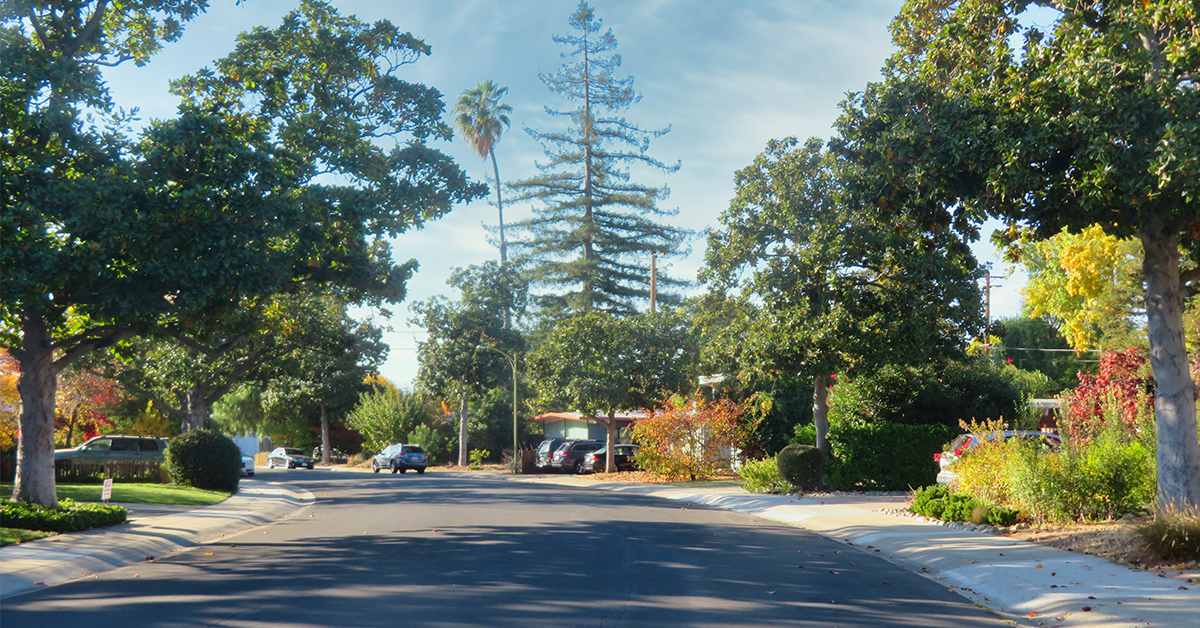 |
Few things are as All American as the rectangular grid on the land. It’s how William Penn laid out Philadelphia, how Thomas Jefferson platted the Louisiana Purchase, how San Francisco laid out its streets – even when they marched up and down the slopes of Nob and Russian Hills.
But progressive urban planners have always hated the idea of imposing rectangles on the land and have argued instead for street layouts that are about people and their lives – and about nature, as opposed to mathematical rigor.
From his earliest days as a home builder, Joe Eichler experimented not just with his houses but with his site plans. Visiting the various Eichler subdivisions that dot the Bay Area landscape, it is easy to look at the houses and notice how the models changed over the years – but to ignore the often-innovative ways they are arrayed on the street and in relation to each other.
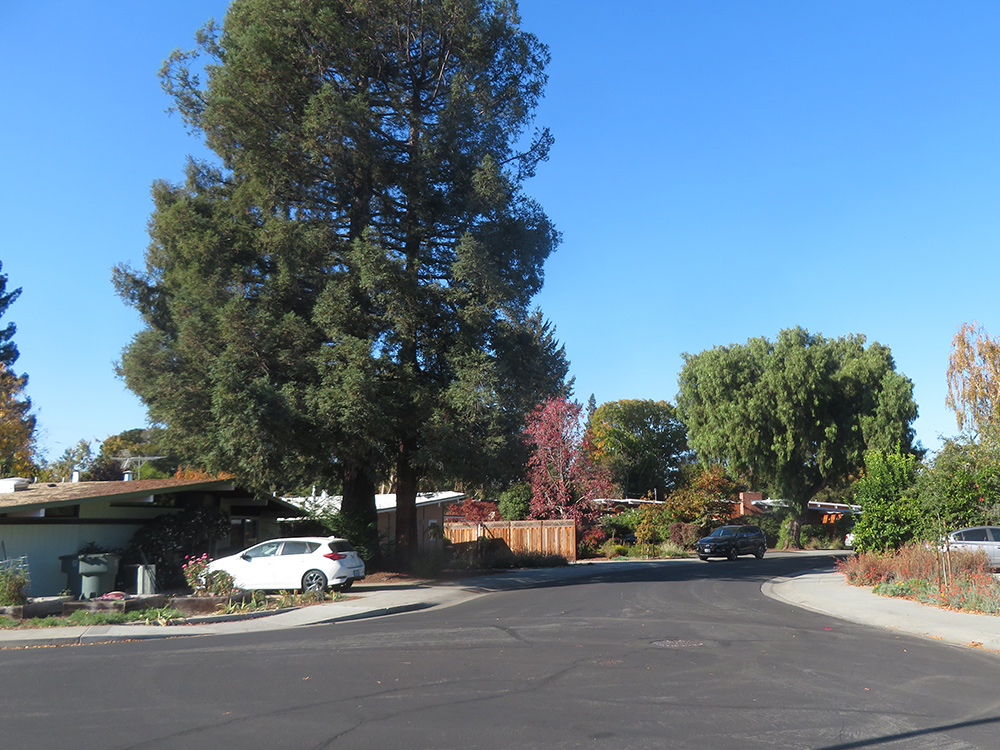 |
When it comes to striking, non-grid street plans, Eichler is best known for Fairmeadow Circles, built in what Joe’s architects A. Quincy Jones and Frederick Emmons later called a “concentric circle site plan.” The site plan was by architects Anshen and Allen.
The Palo Alto neighborhood is a series of interlocking circles in a pattern so unusual, so pictorial, that Fortune magazine used it as a cover image. It was Fortune’s 25th anniversary issue, February 1955, that focused on 'The American Breakthrough,' and marveled at how much the United States had changed in the previous 25 years.
“‘Modern’ architecture, so new, so controversial in 1930, is the accepted style in 1955,” the editors wrote.
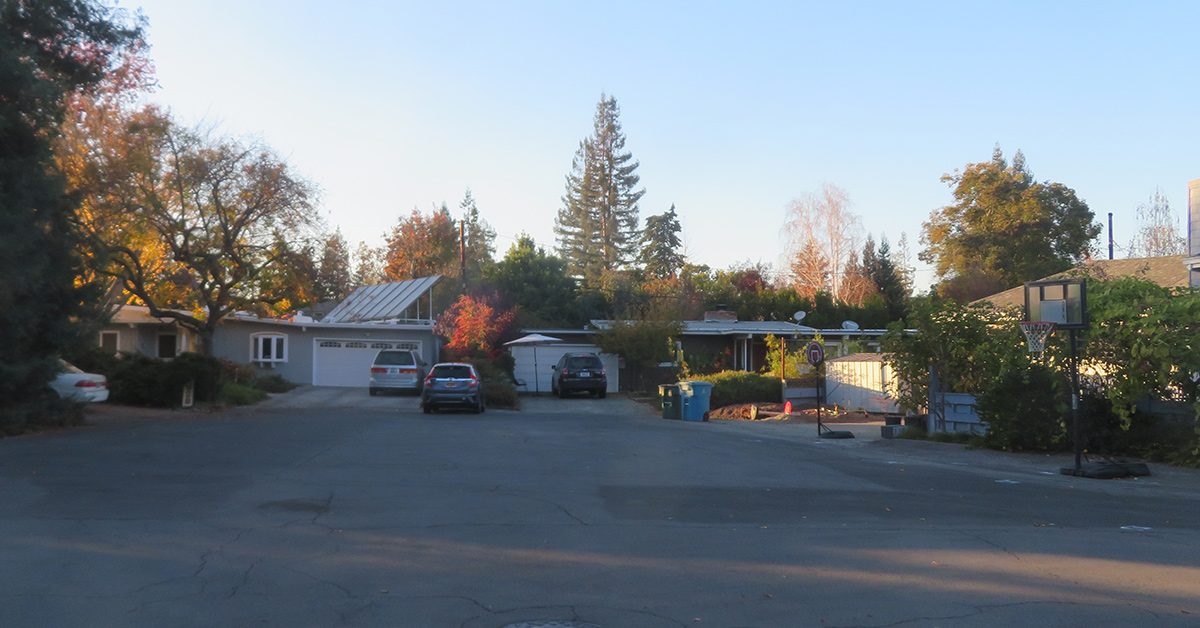 |
But Fairmeadow, from 1950, was not the only innovative use of platting homes by Eichler that year. Two other neighborhoods that over the years have gotten less attention for their unusual site designs are also in Palo Alto. They are Greer Park, with about 130 homes also on some circular streets; and El Centro Gardens, with only 16 homes that are arrayed on a lazy, curving street that forms a sort of cross pattern.
All were designed by architects Bob Anshen and Steve Allen.
Susan Hall Harrison, who authored a thesis about Eichler’s work back in 1978, wrote:
“Previously restricted to working with [the earlier subdivision] Sunnyvale Manor’s conventional grid street plan, Anshen & Allen were now allowed to serve as site planners as well as architects. The bulging Latin cross cul-de-sac of El Centro Gardens and the loops of Greer Park were designed to reduce road construction costs, to avoid the monotony of conventional streets, and to allow variation in the siting of the houses.”
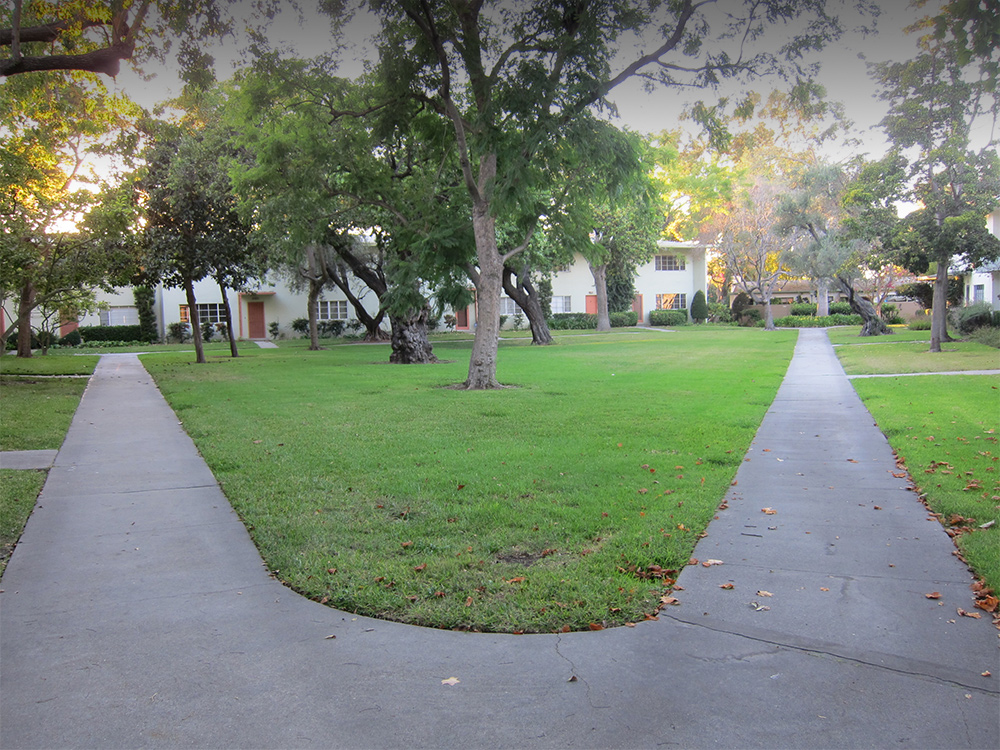 |
The three Eichler subdivisions of 1950 won nationwide attention, being cited collectively as “subdivision of the year” by the magazine Architectural Forum.”
Yet as the years went on, as the architectural press continued to uniformly praise Eichler homes, Joe Eichler was occasionally taken to task for not doing enough to produce what forward thinkers called “complete neighborhoods,” with pedestrian pathways separated from roadways, and with schools, shopping, and the like integrated into the tract.
Of course Eichler did not always start his neighborhoods from scratch. Often roadways had already been installed or laid out.
The tradition of the complete community goes back, in modern days, to the mid 19th century. In 20th century California, one proponent, Clarence Stein, produced an exemplary development in Los Angeles, Baldwin Hills Village, which remains a beloved place today. There, two-story homes are surrounded by trails and open space.
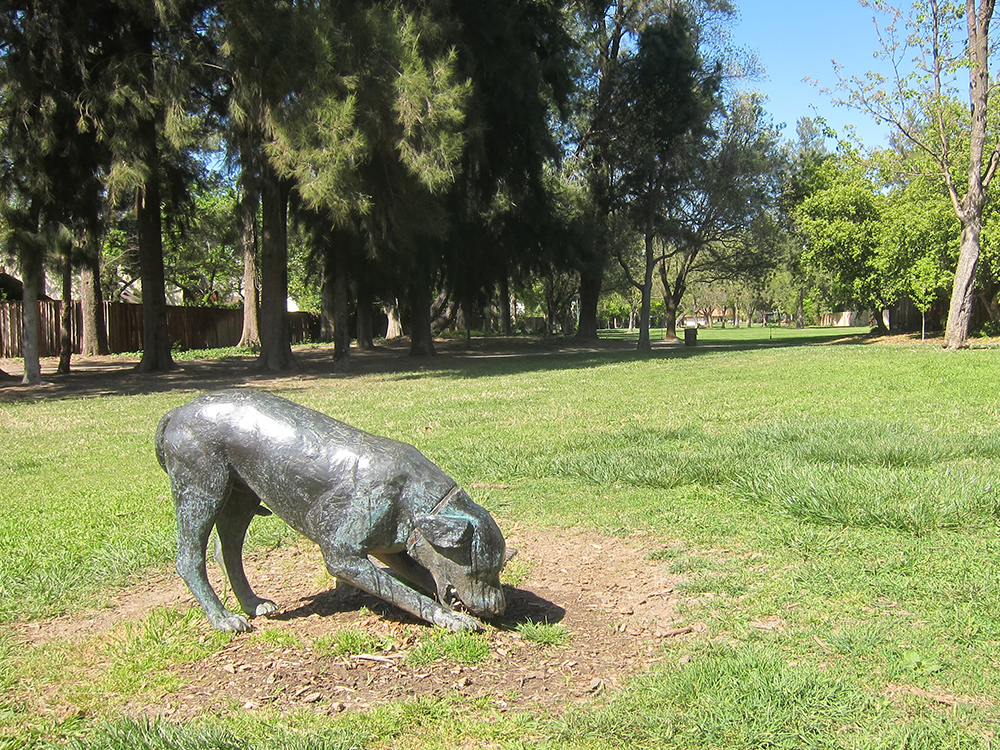 |
Perhaps Jones & Emmons' most unique and progressive tract layout was done not for Eichler but for the U.S. Air Force. This is Capehart Housing at McClellan Air Force Base near Sacramento, today a private rental community called The Arbors at Antelope. Here, homes are arrayed in a rolling greenbelt, with pathways and small parks.
Another wonderful example of greenbelt planning that integrates modern homes is North Davis, where modern homes by the Streng Brothers, as well as more traditional homes, are arranged alongside an impressive collection of greenbelts and trails.
Jones and Emmons were leading proponents of complete neighborhoods, an objective they promoted in their book ‘Builders Homes for Better Living,’ which they dedicated “To Joseph L. Eichler, a truly progressive builder.”
They wrote:
“If one is willing to accept the usual method of land development prevalent today, that of dividing the area into the maximum number of lots per acre compatible with local zoning laws, there is not much room for planning better communities. With this approach, try as we may, the most efficient layout will almost always result in a grid plan which provides rows of identically shaped lots in a pattern familiar to everyone. This method can hardly be expected to produce any result other than unrelieved monotony, a fault admitted by every builder and obvious to every buyer.”
Still, the sort of semi-utopian planning Jones and Emmons praise in their book is something Joe Eichler rarely delivered. For example, the two architects argued that developers should develop master landscape plans for their tracts, including individual homes. “The community builder has a great opportunity in the proper use of landscaping,” they wrote. Joe rarely provided community-wide landscaping.
A developer, Jones and Emmons wrote, has “a moral obligation to provide a pleasant place to live.”
- ‹ previous
- 215 of 677
- next ›



